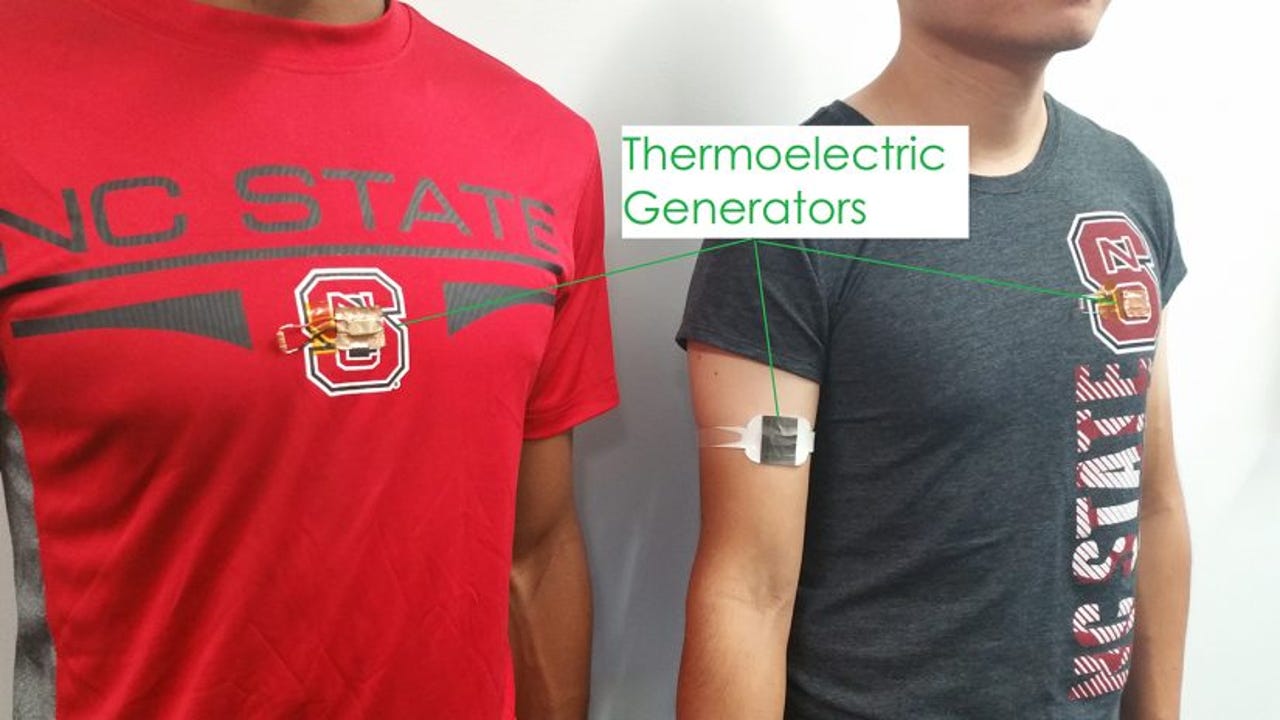Fed up with your battery dying? Skin-worn generator harvests body heat to top up gadgets


The body-worn generators are designed to keep wearables running as long as you're alive and warm.
Your body heat combined with a tiny skin-patch generator may be enough to do away with batteries in wearables.
The flexible skin-worn patch, developed by researchers at North Carolina State University, lets users generate more electricity than previous heat-harvesting efforts, which were built with so-called heatsinks and were heavy, stiff, and bulky.
Earlier heatsink technology was only capable of generating up to one microwatt or less of power per centimeter squared (μW/cm2), whereas the new system is capable of outputting 20μW/cm2. At only two millimeters thick and made with flexible materials, the patch is also lighter and more comfortable to wear, according to the researchers.
The design of the skin patch exploits the difference in temperature between the body and ambient air to generate enough electricity to power a wearable such as an electrocardiogram (ECG) sensor or other medical device that could benefit from not having to rely on batteries.
The thermoelectric generator prototypes are shaped as a band consisting of one layer of thermally-conductive material on the skin, which spreads out the heat, and a second polymer layer, which captures and forces body heat through an embedded thermoelectric generator. It is also capable of dissipating excess heat that isn't converted into electricity.
"In this prototype, the TEG [thermoelectric generator] is only one centimeter squared, but we can easily make it larger, depending on a device's power needs," said Daryoosh Vashaee, an associate professor of electrical and computer engineering at NC State and one of the authors of the paper.
The researchers found that the optimal location for the generator is on the upper arm of the wearer, as opposed to the wrist or chest. They also developed and tested generators for T-shirts, but these were only capable of producing between 6μW/cm2 and 16μW/cm2.
The prototypes are part of Vashaee's contribution to the National Science Foundation's Nanosystems Engineering Research Center for ASSIST, or Advanced Self-Powered Systems of Integrated Sensors and Technologies, at NC State.
"The goal of ASSIST is to make wearable technologies that can be used for long-term health monitoring, such as devices that track heart health or monitor physical and environmental variables to predict and prevent asthma attacks," he said.
"To do that, we want to make devices that don't rely on batteries. And we think this design and prototype moves us much closer to making that a reality."
MORE ON WEARABLES
- Fitbit leads wearables market as Apple Watch sales decline
- TomTom announces three new fitness wearables; one measures body composition
- How wearable devices are helping people with autism manage anxiety
- Wearables, health tech impress at Microsoft's 2016 Imagine Cup finals
- Forrester: Nearly 1 in 3 Americans will use a wearable device by 2021
- It's no robot guide dog - but this wearable aims to help blind people safely move
- TechRepublic: Survey: Wearable inaccuracy is top complaint, and here's what else users want to track
- CNET: Samsung missed the memo: Gear-type smartwatches aren't the future of wearables